If you already own a laptop or desktop, the cost to start a blog is less than 90 euros per year. It can actually be even less, depending on your blogging niche.
After blogging for several years in different languages and platforms, that’s what I’d pay anyway if I were about to start a new blog right now. Of course, this doesn’t mean that you would have to pay 90 euros per year forever. If your blog starts receiving lots of traffic or discovering things that you need to improve, this price could change. However, as a beginner blogger, this amount of money will be enough for the first months or even years.
In this post, I’ll break down the essential costs of how much it costs to start a blog today. I’ll try to consider different blogging niches, and I’ll make sure to include some useful tips about blogging.
*Some links are affiliate links.
How much does it cost to start a blog: The Essentials
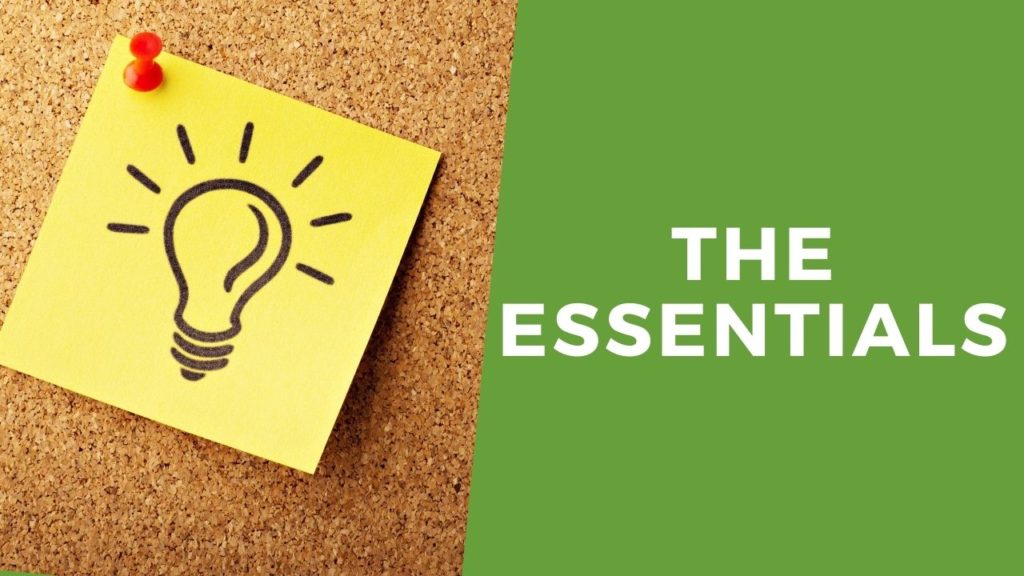
It doesn’t matter if you want to blog for fun or if you plan to rock the blogging world in the long term. In my opinion, you should treat your blog seriously. It’s through your blog that your personality will shine, no matter what your topics are. That said, I strongly recommend skipping the free blogging options and going for the pro ones. And I’ll explain in the following paragraphs why and how to do it.
The following two things will actually be the only expenses you really need.
1) Web hosting
Web hosting will be your main expense when you start blogging. Moreover, it will be an expense that will accompany you throughout your journey through the blogosphere. What is web hosting? More or less, it is a space that you buy from a provider to host your website files.
Although there are free options out there, like Blogger, paid web-hosting will give you plenty of options. You can choose different themes, you can personalize them, can earn money through various ad networks, and you can install plugins. In addition, most of the blogs you see online are running on WordPress, a platform that gives you tons of possibilities.
But now, let’s go back to the web hosting providers. As you can easily imagine, there are plenty of them in the market. In my opinion -and actually, the one I’m using for the website you read- the best one is Bluehost.
I reviewed Bluehost in the past (tl;dr: it’s excellent), and I can highly recommend it.
Pricing
The pricing starts from approximately 3 dollars/euros per month, and then the sky is the limit. No beginner blogger needs something expensive. If your blog sees insane amounts of traffic after a couple of years, you can consider upgrading your plan. But for the time being, the cost to start a blog on Bluehost is between 3 and 6 euros per month. Let’s do the maths: this translates from 36 to 72 euros per year.
Why do web hosting prices vary? Well, there are different hosting plans within this price range. You have the Basic Plan, the Choice Plan, and the Choice Plus plan. Depending on your needs, it’s up to you to decide which hosting plan you’ll buy. The Basic Plan comes with 50 GB of storage, while the other two have unlimited storage. Apparently, every plan comes with different perks.
I decided on the Choice Plus Plan, mainly because of the unlimited storage and the Free Domain Privacy. In addition, I upload lots of photos, and I wanted to do this without thinking of the allocated space. So, if you plan to upload loads of high-quality photos, this one might also be the one for you. On the other hand, the Basic Plan should also be enough if you don’t care about the images and want to take a more journalistic approach.
Domain Name
An unused domain name usually costs anything between 10 and 25 euros/dollars per year. However, if you decide on Bluehost, the domain name is included. While this is not a major expense, it’s sure a nice add-on. That said, instead of having a domain name like blogname.wordpress.com, you’ll have a blogname.com instead. This looks by far more personalized and definitely more professional.
Tip: See here how you can find a blog name.
Special offer
I’m glad that Bluehost, which is an official WordPress partner, agreed to offer the users of Letters to Barbara a free domain name and up to 60% off on web hosting. Follow this link to Bluehost’s official website and see the current offers.
A tip: If you can afford to pay upfront for the three years plan, you’ll make the most of Bluehost’s offer. However, if this exceeds your current budget, the annual option is fine, and it just comes with a smaller reduction.
2) A professional theme
In my opinion, whenever you’re trying to figure out how much does it cost to start a blog, you should always include the expense of a professional theme.
First things first. No, you don’t need a professional theme to start a blog. You can very well use the premade ones you’ll find on WordPress after buying web hosting on Bluehost. But a professional theme means that your blog will stand out from the crowd, and it won’t look like loads of other ones.
Don’t let the term professional WordPress theme freak you out. It doesn’t mean that they are only meant for businesses, nor will they be hard to handle. What it really means is that they have prettier interfaces, they are updated often, and they will offer a personalized look to your blog.
Now, the cost of a professional theme varies. The majority of them cost anything between 20 and 60 euros/dollars. A few of them might be cheaper, and equally, few might go well beyond this price range. As you can understand, there is, of course, a cost to consider in comparison to the free themes. However, they cost significantly less than a custom-made theme that a developer will create for you from scratch, and it’ll probably cost four digits.
One of the best places to shop for professional WordPress themes is Theme Forest. There’s a wide variety to choose from, and most of them won’t cost you more than 30-40 euros/dollars. Remember that this is a one-off payment.
Pro tip: Choose wisely your theme. While you can always change it at a later stage, by doing so, you might face compatibility issues. Changing themes all the time is not something I recommend. Apart from losing money, you might see that your old theme’s features won’t be compatible with the new one. That said, choose a theme you like and make sure that it serves your blog’s purpose. A theme should give you peace of mind to create content.
Cost to start a blog: a recap of the Essentials
And, believe it or not, that’s it with the essentials and the budget you need to start a blog. I firmly believe that as a beginner blogger, you don’t need anything more to start running your blog. In the following sections, you’ll see some things that you can consider, but most of them are for a later stage.
So, let’s recap the essentials and the estimated budget you need to start running a blog.
- Web hosting: The more years of hosting you buy up front, the cheaper its monthly cost becomes. For the minimum time of 12 months, you’ll pay close to 5 euros/dollars per month. So, for a maximum of 60 €/$ per year, you get the Basic web hosting plan and a free domain name on Bluehost. If you pay upfront for 36 months, you’ll have the Choice Plus Plan with the same money per month.
- Professional WordPress theme: As I wrote earlier, the majority of themes cost anything between 20 and 60 euros. There are plenty of good-looking themes for 30 €/$. This is a one-off payment.
All that said, 90 €/$ will give you one year of hosting on Bluehost, a free domain, and a professional WordPress theme. And that’s all you need to start creating content. Not bad, right?
Claim your Bluehost offer and get up to a 60% reduction on any of their plans.
How much does it cost to start a blog: things to consider at a later stage
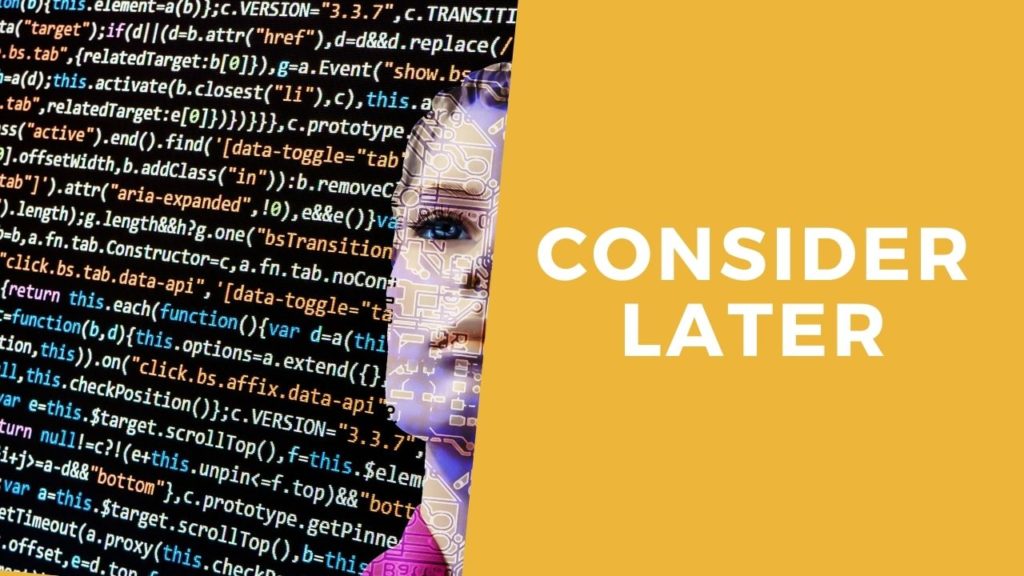
You don’t need any of the things mentioned in this section if you are just starting as a blogger. In fact, you might also not need them at a later stage. The reason I write these things here is a) to give you an idea of what might appear as an expense down the road and b) to consider them only if you really need one straight ahead. Although the latter seems highly unlikely for beginner bloggers, you are the only one who knows the tools you need.
1) Pro versions of WordPress plugins
There are thousands of WordPress plugins, which is why WordPress is so functional and beautiful. What are the plugins? These are actually smaller pieces of software that you can add to your blog and extend functionality and/or add new features.
Most WordPress plugins are either totally free or have a free and an extended pro version. The latter comes obviously at a cost. You can install as many as you want, but they will slow your website. And you don’t want that. Therefore, be wise about the number of plugins you install and make sure each adds something you need. Otherwise, don’t install it or consider removing it.
Plugins will make your life easier, and they will offer you a shortcut in more complicated processes. As a blogger, you need to focus on your content and not on complex things you won’t clearly understand. Plugins like Yoast SEO (it helps you rank on search engines) or Updraft Plus (it protects your site) come with free and paid versions. In the beginning, you’ll only need the free versions. In fact, they will be more than enough even in the long term.
All that said, as a beginner, you should stick to the free versions. If at some point you think that you need the upgrade, you can consider it. The cost of paid plugins varies: they start from 20-30 €/$, and they go up to several hundred euros/dollars. Therefore, start with the free versions and, after several months, consider their pro versions. From my experience, you might never need them.
Bonus: The best (free and paid) blogging tools for beginners.
2) Social media tools and other software
Lots of bloggers love social media. I’m not that keen on them, but they are indeed important. I also use them and share my posts there, even though I prefer to keep all my original content on this blog.
However, if you want to optimize your online presence and drive traffic to your blog, a social media scheduler might come in handy. For example, software like Tailwind could help you grow your Pinterest and Instagram following -and if you do it right, you can quickly grow your blog. You can try Tailwind for free for two weeks and see if it’s something for you.
On the other hand, when it comes to software that helps me run my blog smoothly, I often think of KeySearch. This is an awesome tool that helps me with SEO or Search Engine Optimization. Doing SEO means that you optimize your content for search engines like Google, Bing, or Yahoo. Then, users can find your content online and visit your blog. Organic traffic is free traffic, and that’s why it’s so important for every blogger out there.
KeySearch.co does exactly that. It analyzes search volumes of keywords and offers suggestions for your blog posts. You can read my extended KeySearch review here, and there’s also a tutorial included. The guys at KeySearch love Letters to Barbara, and they offer 20% off on any of their annual plans if you follow this link and add LTB20 at checkout.
One can extend the list of useful blogging software forever. For example, after all these years of blogging, I can’t think of myself not using Grammarly. Grammarly is the best grammar and spelling checker out there. I use it all the time, and it’s an awesome tool for language suggestions. Let alone, of course, that I can’t think about my blogging life without email marketing software. Early on, I decided to build my email list on Mailerlite, and I never regretted it.
As you can see, there are plenty of things to consider when it comes to blogging software. However, it’s better to consider them later, when you’ll truly have an overview of the things you want to achieve. Buying software will elevate your blog costs, and if you are tight on money, it’s better to leave it for later.
3) Blogging ebooks and courses
If you don’t know where to start your blogging journey, there are plenty of blogging courses out there. I haven’t tried any of them, therefore, I can’t recommend one. Learning to blog is a neverending process, and you can definitely learn lots of things by studying. If you are not the self-studying type, a blogging course might help you organize your blogging life. They come, of course, at a price, so it’s better to think if you need one and then start searching for them.
Apart from the courses, there are also blogging ebooks to organize your workflow. I have recently released two ebooks about blogging that are currently on offer for 6,99 euros. In these two ebooks, you’ll learn 5 things to do before publishing a blog post and another 5 tips to do after publishing a blog post. Check my blogging ebooks here.
4) Ads
Paying for ads will definitely bring you traffic. However, in my opinion, it makes sense to pay for ads only when you have enough content in your blog. Driving traffic to an empty blog or a blog with 2-3 posts doesn’t make sense. For vanity reasons, it’s okay, but vanity is never a good advisor when it comes to money.
However, when you have enough content, and you want to advertise it, paying for ads is a whole different story. It can bring you traffic, new clients, help you make money through affiliate marketing, etc. One thing to keep in mind is that paying 5$ won’t bring you any traffic, and also, it won’t make any miracle as a one-off thing. Consider having a budget and then spending money over the course of a month/a year etc. Otherwise, you might spend money that’ll go down the drain.
Bonus: I wrote an extensive guide about starting a travel blog and how to monetize it. Even if you are in a different niche, most of the things I describe apply to every kind of blog. There you will find plenty of recommended plugins, monetization tips, and other useful info. Check out here how you can set up your blog.
Cost of starting a blog: recommended blogging hardware
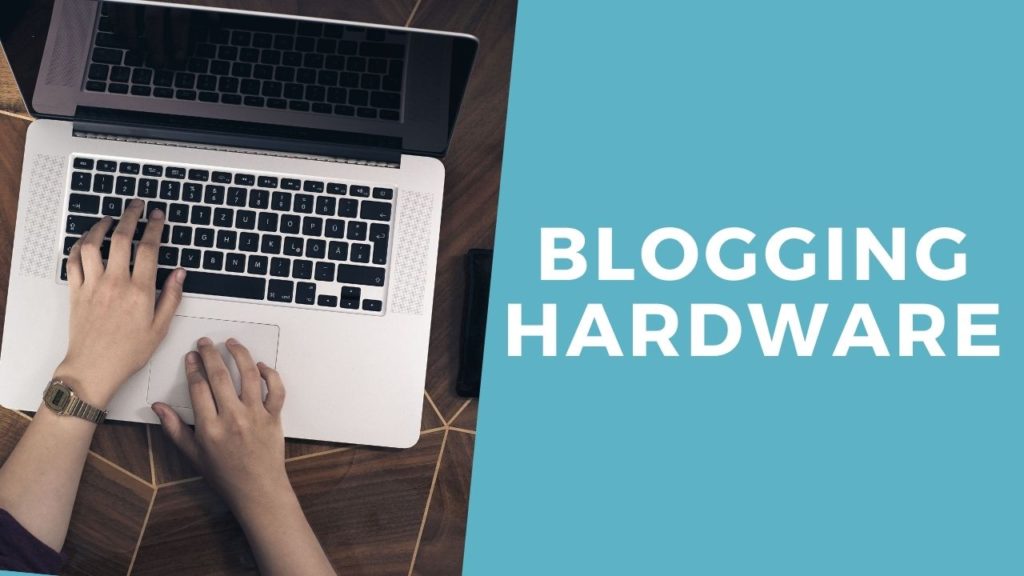
Now, as you might remember, the opening line of this post was “if you own a laptop or desktop…” -and then I went on with the cost. So, here I’m going to talk briefly about blogging hardware.
Please keep in mind that if you have a working laptop or desktop, you don’t need a new one to start blogging. As long as it is properly working and can do whatever you want it to do, don’t buy a new one. It’s honestly better to save the money for other things like software or ads or simply keep them in your bank account for daily expenses.
Therefore, this section is for people who either don’t have blogging software or want to buy new devices. I will focus on the laptops and cameras that will help you run your blog smoothly, plus a couple of devices that come in handy.
1) Laptop
Desktops are fine, but it’s always better to have a laptop when it comes to blogging. For example, you might want to work on the road or simply visit your favorite cafe and work there. In addition, a laptop will keep you connected to your blog more easily, and you can work from everywhere. Therefore, if you are about to buy blogging equipment, you should start with a laptop.
It’s all a matter of budget, of course. For several years, I resisted buying a MacBook Pro. But when I finally bought one, I wondered why I didn’t buy one earlier. It’s a workhorse, and it never let me down. After more than four years, it still works as if I bought it yesterday. If you can afford the cost, for me, it’s a no-brainer. It still works smoothly when I use heavy software like Lightroom (for photos) or Final Cut Pro X (for videos). You can check the best prices for the latest MacBook Pro here.
Now, I know that lots of people cannot afford an expensive laptop. And the truth also is that you can work on your blog with any other laptop out there. So the main question is: what you’d like to do with your laptop? I used earlier the journalist example (and I’ll use it in the next section) to describe someone who only writes text and doesn’t care about photos. If that’s you, then a Dell laptop or an HP one will be just fine.
In between, you have plenty of other options. You should first think of your budget and then try to find one. A lightweight laptop with plenty of storage and enough RAM will help your blog. That said, if I couldn’t afford a MacBook Pro and I needed a laptop for editing photos etc., I would consider an Asus or also a Lenovo.
2) Camera
Writers and journalists (or people just willing to share their thoughts) won’t need a camera. However, if you want to include photos in your blog posts, you will most likely need a camera. Although modern smartphones have decent cameras, I always suggest a proper camera for blogging.
Buying a new camera is also a matter of budget. Although I use a small compact camera for running this blog, the Ricoh GR II, I would buy a mirrorless camera if I were about to start blogging. This will give you the option to use different lenses and be more creative. I also own a mirrorless camera that I often use, and I highly recommend it: the Sony a6300. In general, I find the a6000 series awesome -you can see here the latest Sony camera of the series.
3) External hard drive
An external hard drive is a must. It will make your life easier, and it will give you peace of mind. But, to be honest, if you already own a working laptop and camera, it’s better not to buy new ones and invest in external hard drives.
Modern laptops and cameras don’t fail that easily -but this doesn’t mean it can’t happen. It’s better to be safe than sorry. So buy an external hard drive and make the backups part of your weekly routine. I use this one from LaCie, and I have used Western Digital ones in the past. I’m pretty sure that are equally good ones out there, but I only recommend the things I used.
If you want to see my full blogging gear, I wrote about the best equipment for minimalist bloggers.
Epilogue & Costs Recap
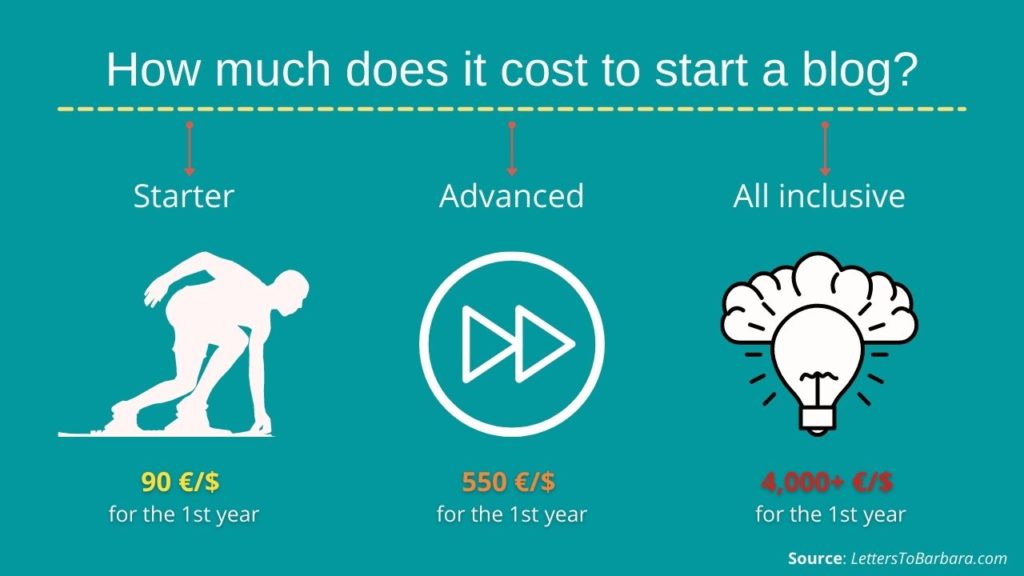
So, before finishing this post, I’ll make a quick recap. For an easier approach, I’ll consider the 12-month web hosting plan by Bluehost. Although the 36-month plan will give you the biggest monthly reduction, I know that many people don’t want to pay everything up front for three years. However, if you can afford it, that’s the best option. That’s what I did, and that’s what I’ll do in the future if I have to.
How much does it cost to start a blog: 3 cases
So, let’s do a quick recap and reply to the question: how much does it cost to create a blog from scratch? Here’s what you need to know:
Starter
60$ for hosting per year (Bluehost Basic Plan)
30$ for theme
Total: 90$ for the first year
(60$ per year from then on)
Advanced
90$ for hosting per year (Bluehost Choice Plus Plan)
60$ for theme
400$ for software per year
Total: 550$ for the first year
(490$ per year from then on)
All-inclusive
90$ for hosting per year (Bluehost Choice Plus Plan)
60$ for theme
400$ for software per year
1,000-2,500$ for laptop
1,200$ for a mirrorless camera
200$ for the hard drive(s)
Total: 3,000-4,450$ for the first year
(550$ per year from then on)
As you can see from the rows above, the cost to start a blog is really high only if you need to buy blogging hardware. Sure, this will be a one-off payment; however, the cost is significant. In the first two cases, you only pay for the blogging itself. And as I stated earlier, if you go for the 36-month plans of Bluehost (Basic or Choice Plus), the reduction will be even bigger. Specifically, the web hosting costs for the Basic will be ~38$ per year and for the Choice Plus ~68$ per year.
So, now it’s up to you to decide if blogging is something for you. As you can see, given that you already have a laptop, the cost of starting a blog is manageable. From my experience, I can assure you that blogging will be one of the most rewarding journeys in your life: you’ll let your creativity flow, you’ll have job opportunities, and you will also learn new things about yourself. And if you’re still wondering if blogging is really for you, check here 10 reasons to start blogging and also the 10 things to consider before starting a blog.
You can find more blogging-related articles by clicking here.
*Get my FREE Travel Writing Course*
Pin it for later
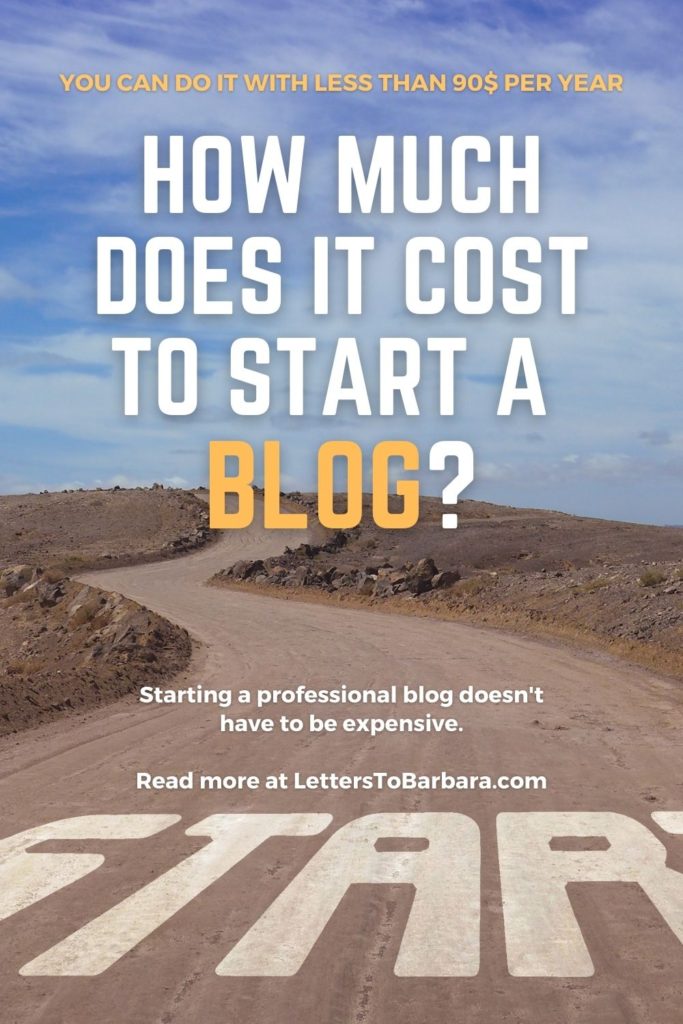
Did you enjoy reading about How much does it cost to set up a blog? Feel free to share the article and leave a comment below.
Last Updated on December 2, 2022 by George Pavlopoulos




